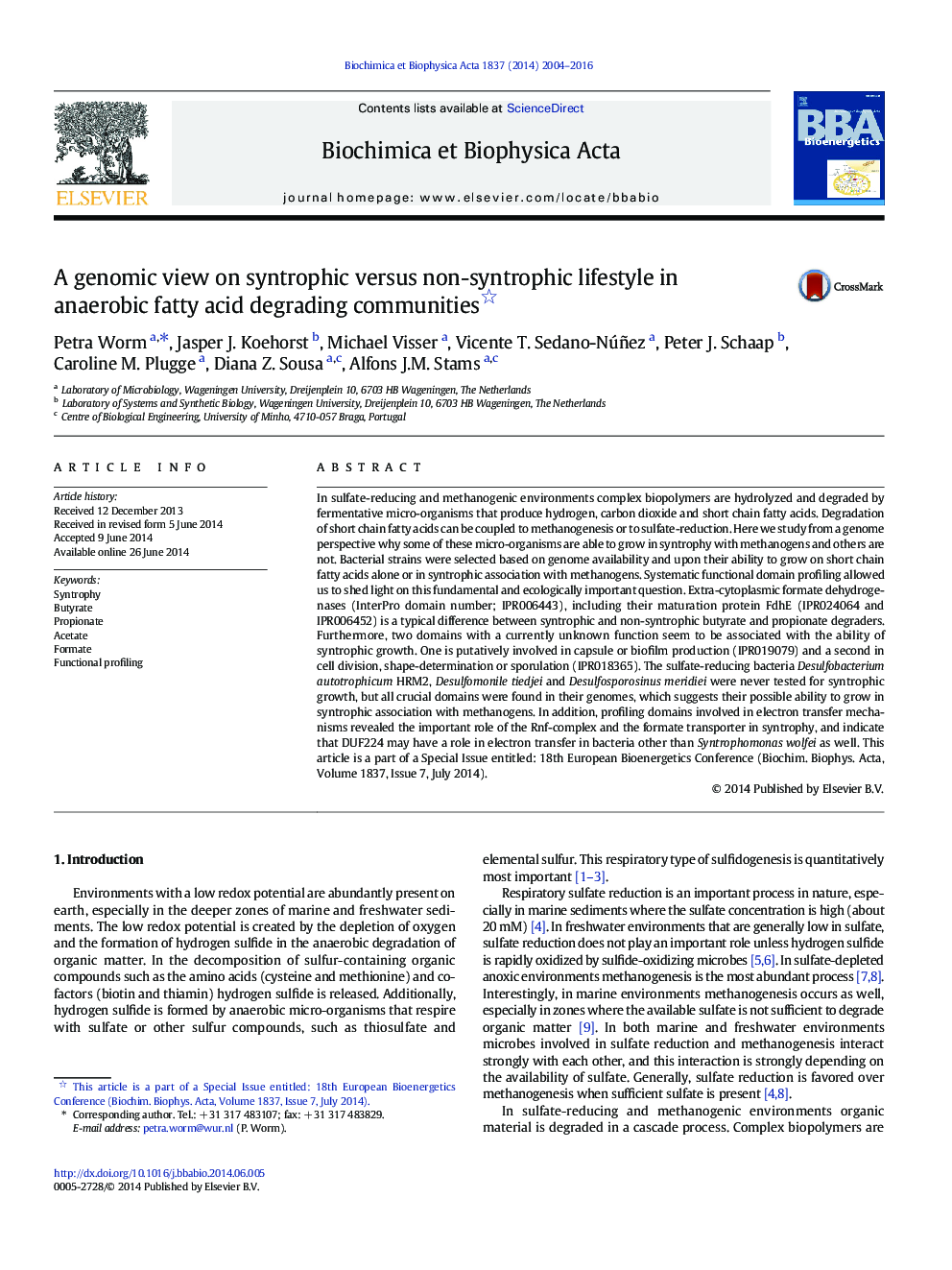| کد مقاله | کد نشریه | سال انتشار | مقاله انگلیسی | نسخه تمام متن |
|---|---|---|---|---|
| 8298772 | 1537043 | 2016 | 13 صفحه PDF | دانلود رایگان |
عنوان انگلیسی مقاله ISI
A genomic view on syntrophic versus non-syntrophic lifestyle in anaerobic fatty acid degrading communities
ترجمه فارسی عنوان
یک دیدگاه ژنتیکی در مورد شیوه زندگی شیروانی در مقابل غیر سینتیفیک در جوامع انحصاری اسید چرب بی هوازی
دانلود مقاله + سفارش ترجمه
دانلود مقاله ISI انگلیسی
رایگان برای ایرانیان
کلمات کلیدی
موضوعات مرتبط
علوم زیستی و بیوفناوری
علوم کشاورزی و بیولوژیک
دانش گیاه شناسی
چکیده انگلیسی
In sulfate-reducing and methanogenic environments complex biopolymers are hydrolyzed and degraded by fermentative micro-organisms that produce hydrogen, carbon dioxide and short chain fatty acids. Degradation of short chain fatty acids can be coupled to methanogenesis or to sulfate-reduction. Here we study from a genome perspective why some of these micro-organisms are able to grow in syntrophy with methanogens and others are not. Bacterial strains were selected based on genome availability and upon their ability to grow on short chain fatty acids alone or in syntrophic association with methanogens. Systematic functional domain profiling allowed us to shed light on this fundamental and ecologically important question. Extra-cytoplasmic formate dehydrogenases (InterPro domain number; IPR006443), including their maturation protein FdhE (IPR024064 and IPR006452) is a typical difference between syntrophic and non-syntrophic butyrate and propionate degraders. Furthermore, two domains with a currently unknown function seem to be associated with the ability of syntrophic growth. One is putatively involved in capsule or biofilm production (IPR019079) and a second in cell division, shape-determination or sporulation (IPR018365). The sulfate-reducing bacteria Desulfobacterium autotrophicum HRM2, Desulfomonile tiedjei and Desulfosporosinus meridiei were never tested for syntrophic growth, but all crucial domains were found in their genomes, which suggests their possible ability to grow in syntrophic association with methanogens. In addition, profiling domains involved in electron transfer mechanisms revealed the important role of the Rnf-complex and the formate transporter in syntrophy, and indicate that DUF224 may have a role in electron transfer in bacteria other than Syntrophomonas wolfei as well. This article is a part of a Special Issue entitled: 18th European Bioenergetics Conference (Biochim. Biophys. Acta, Volume 1837, Issue 7, July 2014).
ناشر
Database: Elsevier - ScienceDirect (ساینس دایرکت)
Journal: Biochimica et Biophysica Acta (BBA) - Bioenergetics - Volume 1837, Issue 12, December 2014, Pages 2004-2016
Journal: Biochimica et Biophysica Acta (BBA) - Bioenergetics - Volume 1837, Issue 12, December 2014, Pages 2004-2016
نویسندگان
Petra Worm, Jasper J. Koehorst, Michael Visser, Vicente T. Sedano-Núñez, Peter J. Schaap, Caroline M. Plugge, Diana Z. Sousa, Alfons J.M. Stams,
